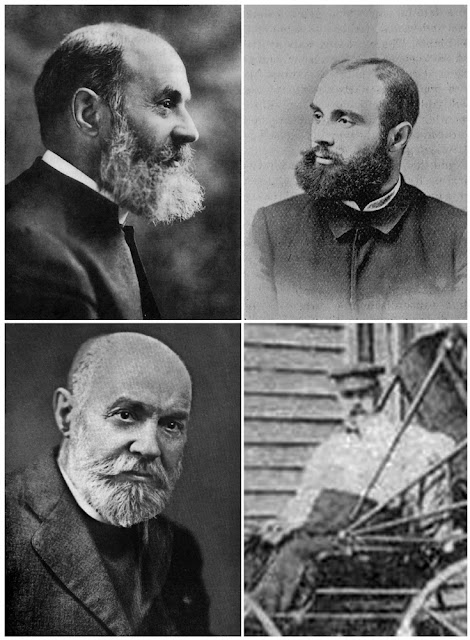 |
|
Marjorie DeFrance (Roy's daughter) was born in the living quarters of the depot on May 31, 1909...
|
I promised this followup over a year and a half ago. My sincere apologies - time slipped away on me which is all too easy to do. Then again, I am continually amazed at the richness of our area's history so perhaps you can forgive me for getting distracted!
Nevertheless, I am finally sharing the photographs that Majorie DeFrance Baker - Roy DeFrance's youngest child - shared with me when I was up home for the
Humboldt Centennial.


 Evelyn Russell was Marjorie's first teacher. The photo above is of Marjorie's first grade class in the St. Vincent School, Miss Russell is at the back of the class. Don't the children look well-behaved?! Does anyone recognize other children in the photo? This would have been around 1915. Please let me know if you think you know someone...
Evelyn Russell was Marjorie's first teacher. The photo above is of Marjorie's first grade class in the St. Vincent School, Miss Russell is at the back of the class. Don't the children look well-behaved?! Does anyone recognize other children in the photo? This would have been around 1915. Please let me know if you think you know someone...
The portrait to the left shows the newlyweds Roy DeFrance and his bride Eva Sheldon (Marjorie's parents) in 1909. The 1910 Census still shows Roy working for the railroad but now he's a telegrapher while my great uncle Richard Fitzpatrick is the agent. Around the same time he became the editor of the St. Vincent New Era under Publisher William Deacon; Roy's WWI draft card lists him as 'Publisher of Newspaper' in 1917. He bought the New Era from the original publisher Mr. Deacon outright, in 1920.
Seen here in his later years, the way I remember Mr. DeFrance, he is in the newsroom where he loved to be, amidst the printers, ink and plates which he could set fast without hardly looking. Roy lived to nearly 100, passing away in his centenary year of 1975. He was a newsman to the end...
This is Marjorie (DeFrance) Baker, Roy's youngest child, taken June 2007. Marjorie has been blessed with her father's longevity, being a very spry 98 when I spoke to her. She had spoken with me at length on the telephone some months before, the previous autumn, regaling me with memories of being put on stepping stools as a very young girl so she could feed the paper into the press. Publishing was definitely a family affair!
 New Era Trivia
New Era Trivia: Our local paper was one of the very last papers in the country to be hand-set. As recounted in
an essay by local school students:
When a person of the younger generation enters the door of this quaint, little, old building, that houses the Pembina New Era, they have a tendency to back out of the door without further inspection. They aren't familiar with the building and its dim lighting. The heavy machines and "The Cases" that he has, are too heavy for the floor to support, therefore, the floors are actually hilly. The whole place has the appearance of being painted black, because of the dirt involved in the printing of the paper. The ceiling of the building is very high with little strings of lights hanging several feet down from them. It is very hard to see anything clearly when you walk into the building, especially if it is sunny outside. Your eyes can't adjust to the sudden change in lighting.
I myself remember this building very well, 'hills' and all, and it was indeed very dim. It was a place from another time, and I was privileged to have a peek into that world...
 Six months ago I posted a photograph of of a man whose identity I didn't know, asking readers to comment if they thought they knew who he was. Today, I got my first response...
Six months ago I posted a photograph of of a man whose identity I didn't know, asking readers to comment if they thought they knew who he was. Today, I got my first response...




















